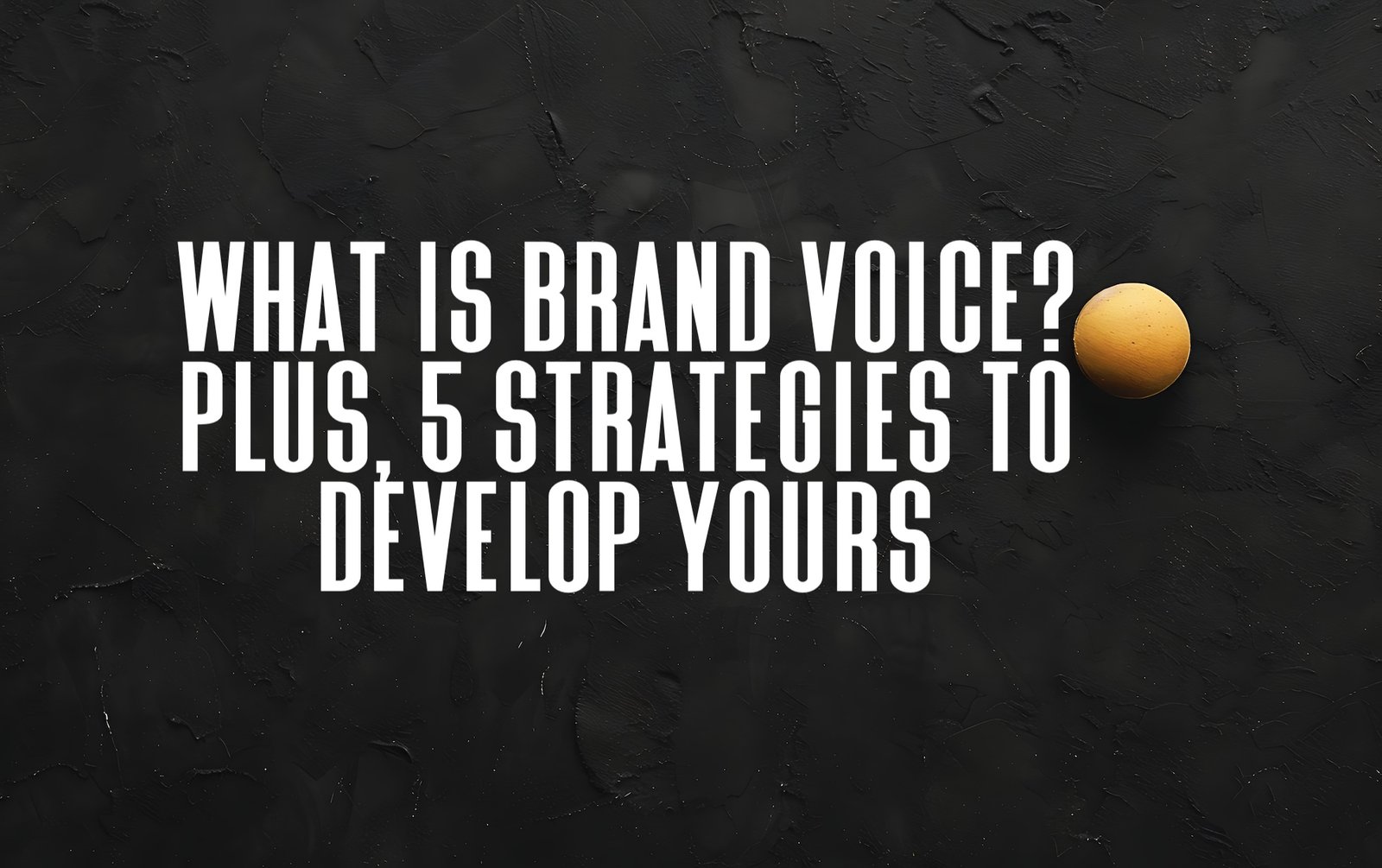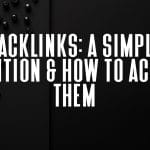- Amu M
- 0 Comments
- 50 Views
Key Takeaways
- Crafting a clear and consistent brand voice helps you lay the foundation for a recognizable brand. It sets your brand apart in a sea of competition.
- To know your brand voice, you should consider your company’s values, goals, and your audience’s needs. That way, you can get everything you write in full alignment with these critical elements.
- Look at successful brand voices to see what works in your industry. They can be friendly and conversational or formal and authoritative.
- Get your team involved in brainstorming sessions to create an unusual brand voice. Make your style guide, and then continue to refine and revise it based on market changes and audience feedback.
- A strong brand voice increases customer loyalty. It builds trust and creates an emotional connection, which translates to boosted engagement and conversion rates.
- Maintaining a consistent brand voice is hard. You can combat this by consistently training and educating on your brand guidelines.
Brand voice means all the world to a business. It informs how people perceive you. Your voice says so much about who you are. People trust a brand that sounds genuine and warm.
To nail that, speak clearly and avoid jargon. Once you have your audience, use a voice that’s friendly and relatable. Be consistent across your platforms. Consider it having a casual conversation with your listeners. This builds trust and connection.
Imagine you’re speaking to them, not at them. A clean, truthful voice stands out. It keeps people coming back. To build loyalty, begin with your brand voice. It makes all the difference in how your audience sees you.
You’ve got to get it right from the get-go. Demonstrate who you are with every word. Keep it real, keep it you.
Understanding Brand Voice
What is Brand Voice?
Brand voice is the distinct personality of your company that dictates how you speak to the world. Your brand has a different outfit for each conversation. This outfit comes through in social media posts and customer emails alike.
This voice always represents the essence of a brand. It’s a blend of language, tone, and style to present a unified picture. While brand tone may vary slightly depending on the situation, brand voice remains relatively consistent. Consider it your brand’s DNA.
For example, HubSpot’s voice is clear, helpful, and human. They manage to come across as kind and relatable on all platforms. Then there’s Spotify, which has a playful and vibrant voice, particularly on social. They keep it fun and fresh, and their personality shows through each tweet and post.
Why Brand Voice is Important
Strong brand voice isn’t just a nice-to-have. It’s the heavy-hitter in brand recognition and awareness. Think how readily you can distinguish a friend’s voice in a room full of people. Your brand voice should create that same kind of distinction in the market.
Fact says 33% of consumers say a distinct personality is why a brand stands out. Your voice builds relations and helps make your brand more than a logo. When you talk with your customers with a clear, consistent voice, it’s personal.
It feels like chatting with a friend who knows you well. That connection increases engagement and creates favorable impressions. Trust is a huge component there. When your voice remains consistent, people know what to expect, whether they’re reading your blog or scrolling through your tweets.
Clear voice guidelines make your team a single unit, speaking the same language. While consistency is important, a bit of flexibility allows your voice to adapt to different platforms without compromising its identity. Brands such as Dictionary.com use an audience-specific voice to make their content meaningful and relatable.
Examples of Brand Voices
Speaking of brand voices, a few names are impossible to overlook. Here’s a quick bullet list to get you started:
- Known for its calming and supportive tone, Asana’s voice appeals to teams looking for productivity tools that enhance collaboration without stress. Its voice is very soothing, designed to make the editorial world less of a war zone.
- With a cheeky and playful voice, Frank Body captures the attention of a younger crowd interested in skincare. The brand incorporates humor and playful language to create a sense of fun around its products.
- Duolingo’s friendly and sometimes quirky voice makes language learning accessible and enjoyable. It connects with learners through relatable humor and gamification. This approach appeals to a broad audience who are seeking a more relaxed learning environment.
Different industries leverage different brand voices to effectively connect with their audience. Disney’s voice is well trained, and magic glows in the dark. Tiffany’s voice is steeped in elegance, offering clear and concise messaging that appeals to a luxury audience.
Aligning a brand voice with the overall branding strategy is important. A consistent voice builds trust and recognition. That alignment ensures that every piece of communication reinforces the brand’s core values and promises.
Diverse Brand Voice Styles
Brands use various styles to communicate with their audiences. You may notice playful, professional, or even sarcastic tones. Look at Dove, for example. Its perspective on self-esteem speaks to those who appreciate authenticity and empowerment.
Fenty Beauty speaks in a voice that is bold, direct, and true to Rihanna. This approach communicates with a varied and inclusive audience.
Experimenting with different styles allows businesses to find their distinct voice. Starbucks has its functional but expressive tone and manages to make its messaging simple and narrative-driven while delivering a unique coffee culture.
Consistency in Brand Messaging
Maintaining a consistent brand voice is essential on every platform. When your branding is inconsistent, it confuses your customers and makes them mistrust you.
Regular training and style guides can help with consistency. A brand voice champion, someone committed to enforcing these guidelines, does a lot to help keep this on point.
Steps to Develop Brand Voice
Forming a solid brand voice takes some planning. Here’s how you can start:
-
Clearly define your mission and core values. These elements form the basis for your brand voice. They aren’t just words on paper; they direct how you present yourself to the world.
Patagonia is an environmentally sustainable company. They put this mission in all their communications, and it resonates with eco-aware customers.
-
Pin down key phrases that speak to your brand’s identity. These should be representative of who you are—a pink cowboy hat or a black three-piece suit kind of brand.
Hold brainstorming sessions to generate words that work with your mission. These keywords should thread through all your marketing materials, shaping your messaging and making it unique.
-
You can’t develop a voice without knowing who you’re speaking to. Don’t stop at the first answer—dive deep through surveys and feedback to discover what your audiences really enjoy.
Create buyer personas to capture the nuances of your audience. This guarantees your voice comes through and feels relatable.
-
Your tone can make or break your brand voice. It’s about determining that balance—formal in crisis communications, perhaps a bit more casual during promotions.
Brands like Mailchimp and HubSpot have mastered the balance of tone and voice consistency. Experiment with different tones to see what resonates with your audience.
-
Look at what your competitors are doing. We’re not talking about copying; we’re talking about learning.
Analyze their messaging to spot gaps or opportunities for differentiation. HubSpot’s social team did this for their corporate voice successfully. They got higher engagement and broke through the clutter in the B2B marketplace.
-
Create a style guide that everyone in your team can follow. This should include language, tone, and visuals to ensure messaging consistency.
It’s your brand’s rulebook, sort of. Disseminate it far and wide, and refresh it periodically to keep pace with your changing brand requirements.
Benefits of a Strong Brand Voice
Enhancing Brand Recognition
A strong brand voice is like your brand’s fingerprint—it helps people recognize you in a sea of options. You know how you can tell if a friend texted you just by the tone? That is the magic here. When your brand voice is consistent, people will start to remember you.
Take Skittles, for example. Their tone is quirky and playful—which sets them apart from the rest. Just by looking at their ads, you can almost taste the rainbow!
It’s not simply about being memorable. It’s about being everywhere people are looking. Social media’s a great tool for this. It’s like your brand’s megaphone. A voice well-crafted can make a whisper a shout that gets heard.
Actually, 80% of consumers love posts with a voice they can connect with. The other huge part is mixing catchy phrases and slogans. They get people’s minds and keep your brand front-and-center.
Building Customer Trust
We all know that trust is the bedrock of any relationship, and it’s no different with brands. When a brand speaks authentically, it builds a bridge to its customers. Think REI, or think pizza. They don’t just sell outdoor gear; they sell adventure, a language that their audience understands.
A brand voice that’s consistent with what customers expect is a promise fulfilled. It reflects transparency and trustworthiness. A trustworthy voice doesn’t sugarcoat. It’s easy, mirroring what customers expect.
If you’re consistent in what you say, your audience will regard you as reliable. It’s akin to how Fenty Beauty clearly states its mission on how they’re all about self-expression. That transparency creates deeper connections with your audience.
It proves that your brand delivers on its promises, which makes customers feel valued and involved.
Challenges in Maintaining Brand Voice
Maintaining a consistent brand voice is like keeping many balls up in the air at once. It’s hard, especially when you’ve got various writers and editors on the team. Each one has their own flair, so it’s challenging to keep everything sounding the same.
As a business, you have to align your voice with your mission and your vision. This isn’t always easy, but it’s super important. Believe me, I understand. With 81% of consumers saying they need to trust a brand before buying, nailing this is crucial.
Adapting to Market Changes
In today’s fast-moving world, brand voice needs to be as flexible as a yoga master. Markets change fast, and so should we.
Pay attention to what your customers are telling you. It helps us adjust our voice to match what they’re looking for.
It is also smart to do regular check-ups on our brand voice. This allows us to see if we’re still on track as things change.
Take brands like Coca-Cola, for example. They’ve managed to stay fresh and current through the years. They adjust to trends and customer requirements, yet always communicate the same message.
Ensuring Team Alignment
Getting everyone on the same page with brand voice is key. It’s like being in a choir – everybody needs to be singing the same song.
Regular training sessions can help with this, keeping everyone up to speed on the voice guidelines. Open chat among the team is also a must. This way, if anything is wrong, it can be corrected promptly.
Leadership plays a big role here as well. It’s leaders who set the example that encourages everyone else to follow.
Conclusion
Nail your brand voice, and watch your brand soar. It’s not what you say; after all, everybody talks; it’s how your brand relates. Your consistency of voice makes you trustworthy and sets you apart. You receive clear messages, and people remember you. Don’t let challenges slow you down. Keep tweaking and stay the course.
Brand voice has some work to do, but the upside is huge. Make it simple, make it real, and then make it yours. Your voice is your brand brought to vivid life. Ready to step up? Culture your brand voice quest. Test, tweak, and shine. Your audience is listening, so give them something to talk about. Get out there, put a stamp on it!
Frequently Asked Questions
What is a brand voice?
A brand voice refers to the specific personality and emotion that a company pours into its communication. It’s how a brand conveys its identity, speaks to its audience, and maintains that consistency everywhere.
Why is a brand voice important?
Trust and recognition are built by a strong brand voice. It was this approach that set your brand apart from competitors.” More importantly, it strengthens your bond with your audience, which increases loyalty and drives better customer retention.
How can I identify my brand’s voice?
Learn your audience and brand values. Step back and analyze your current way of communicating. Use adjectives to describe your brand’s personality. For a successful blog, consistency in tone and messaging is key.
What are some examples of brand voices?
Nike’s empowering tone and Apple’s sleek, innovative style are two examples that come to mind. Each brand reflects a unique voice that becomes instantly recognizable by its audience.
What are the steps to develop a brand voice?
-
Know your audience.
-
Define your brand’s values.
-
Analyze competitors.
-
Create a style guide.
-
Test and refine your voice.
What are the benefits of a consistent brand voice?
A consistent brand voice improves recognition, credibility, and trust. It makes sure that every piece of communication is on brand, resulting in a strong, consistent experience for the audience.
What challenges might arise in maintaining a brand voice?
Your common challenges include mixed messaging across channels, changing market landscape, and team misalignment. Regular reviews and clear guidelines help keep your brand voice consistent and effective.




